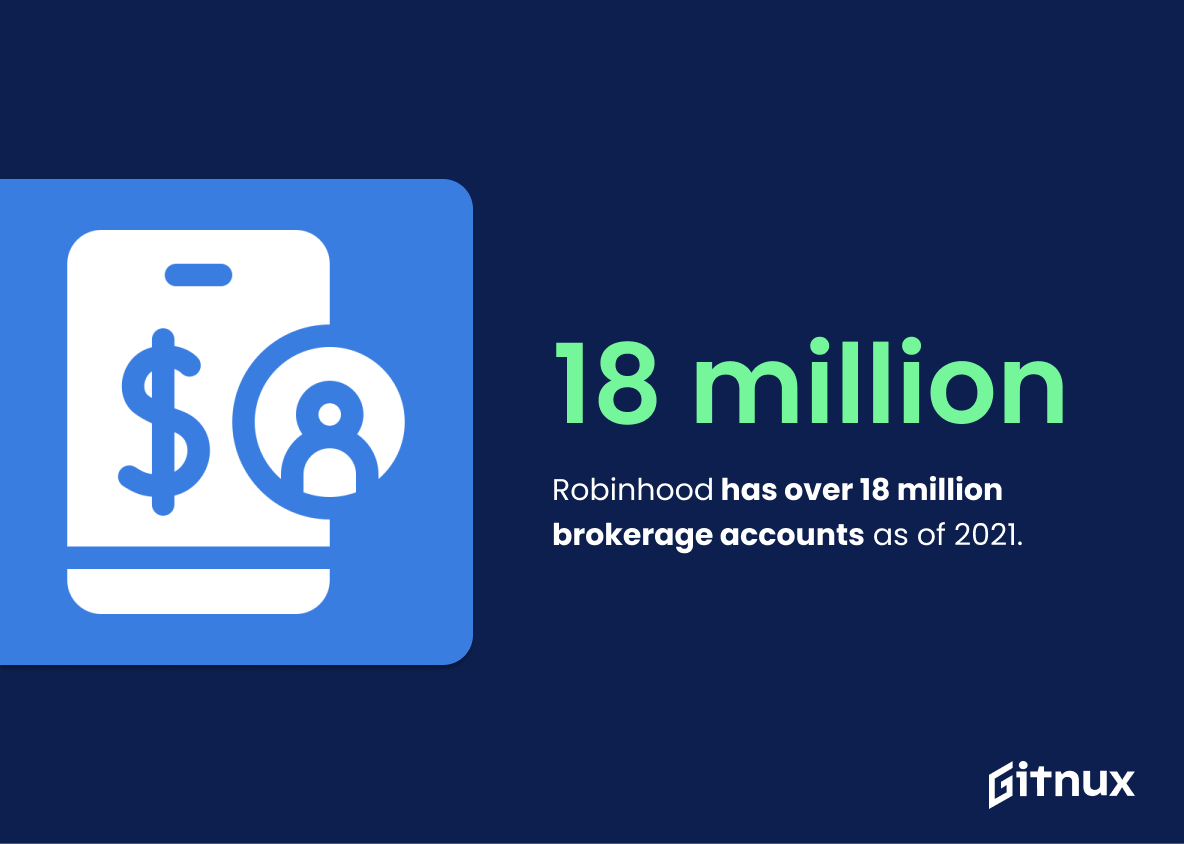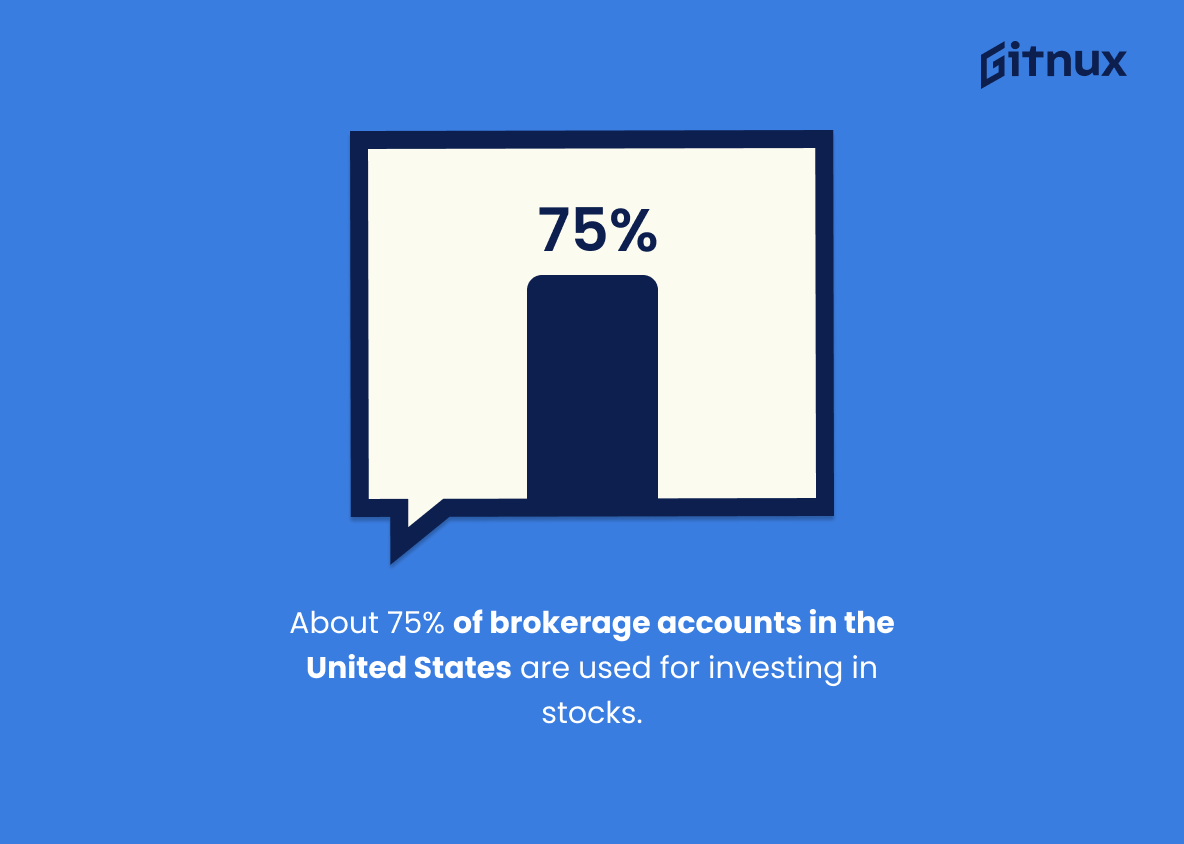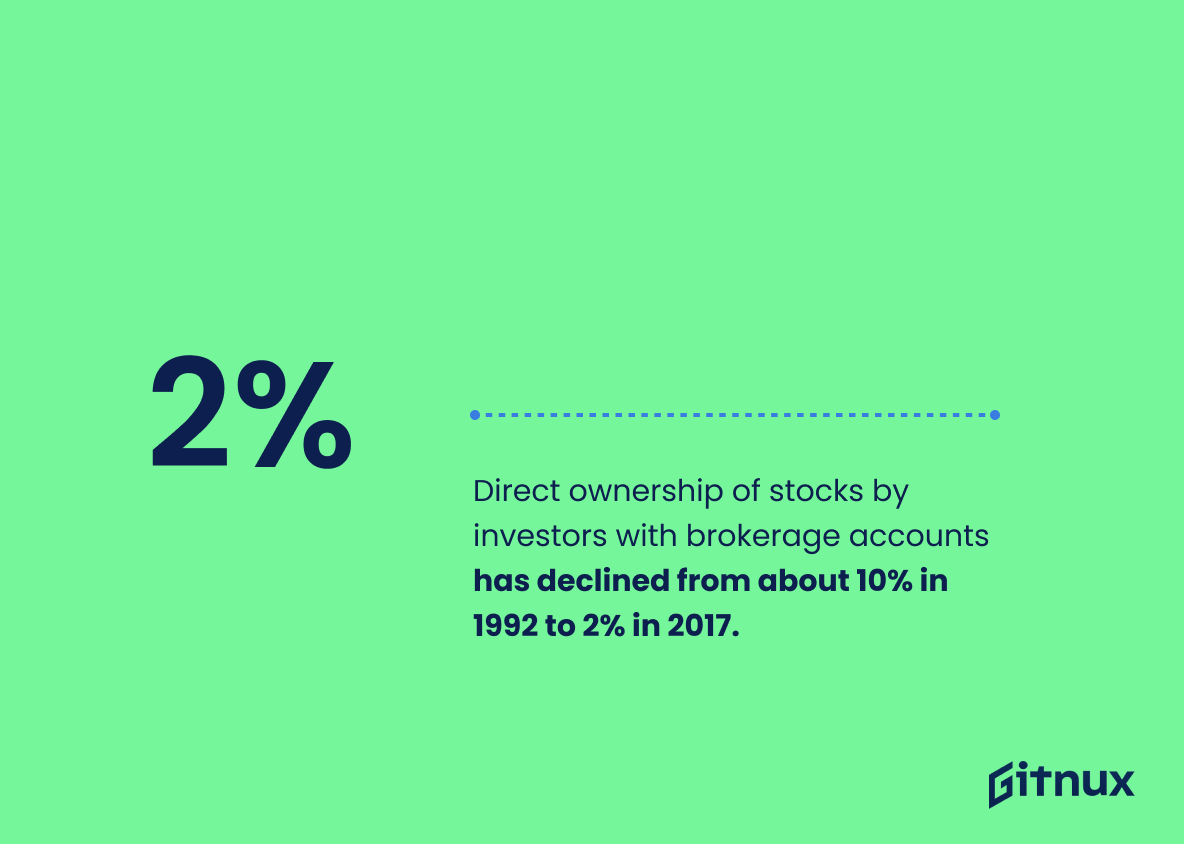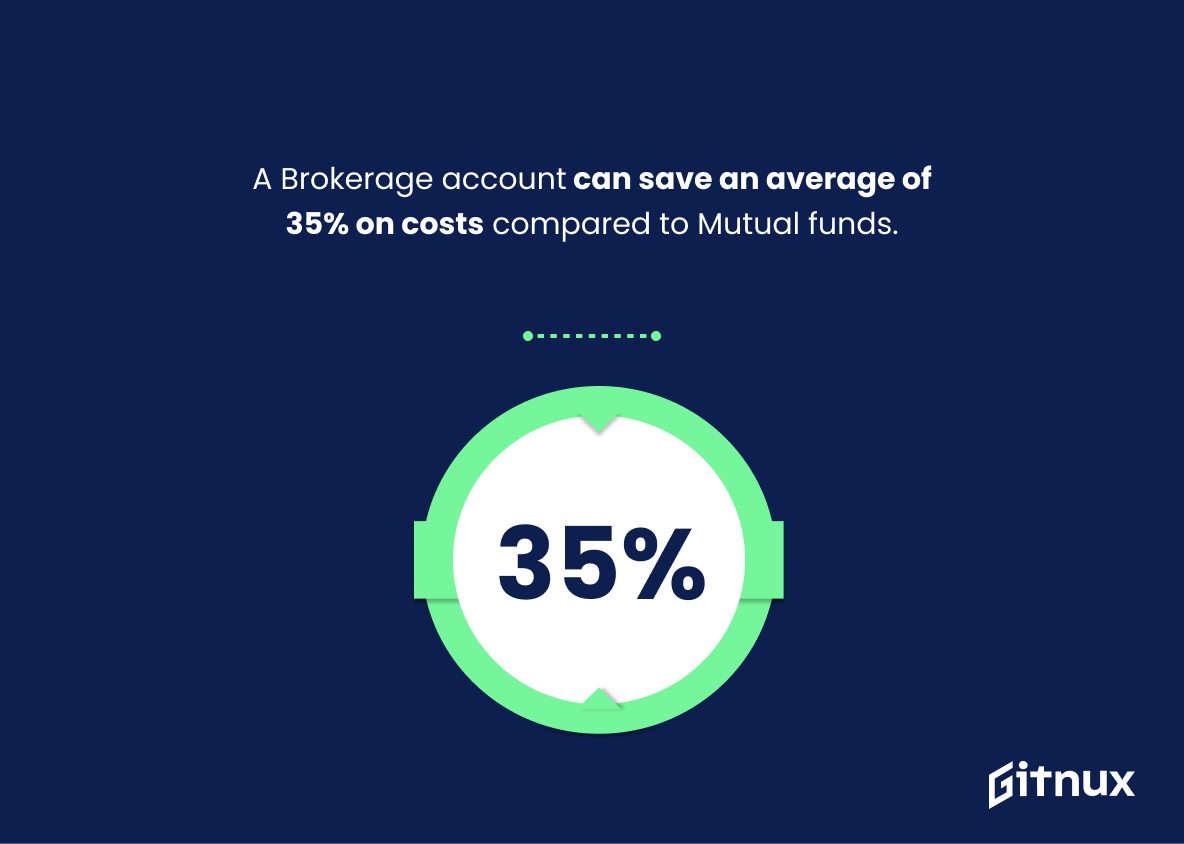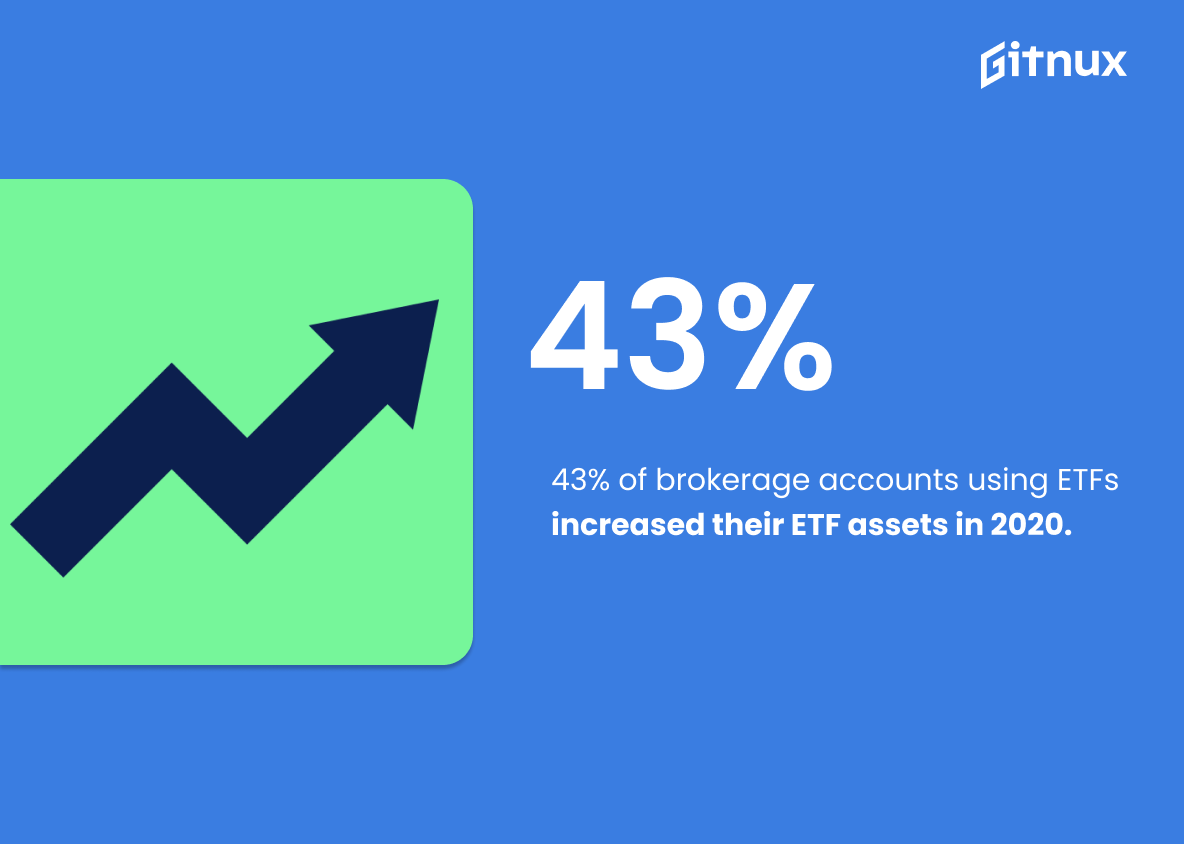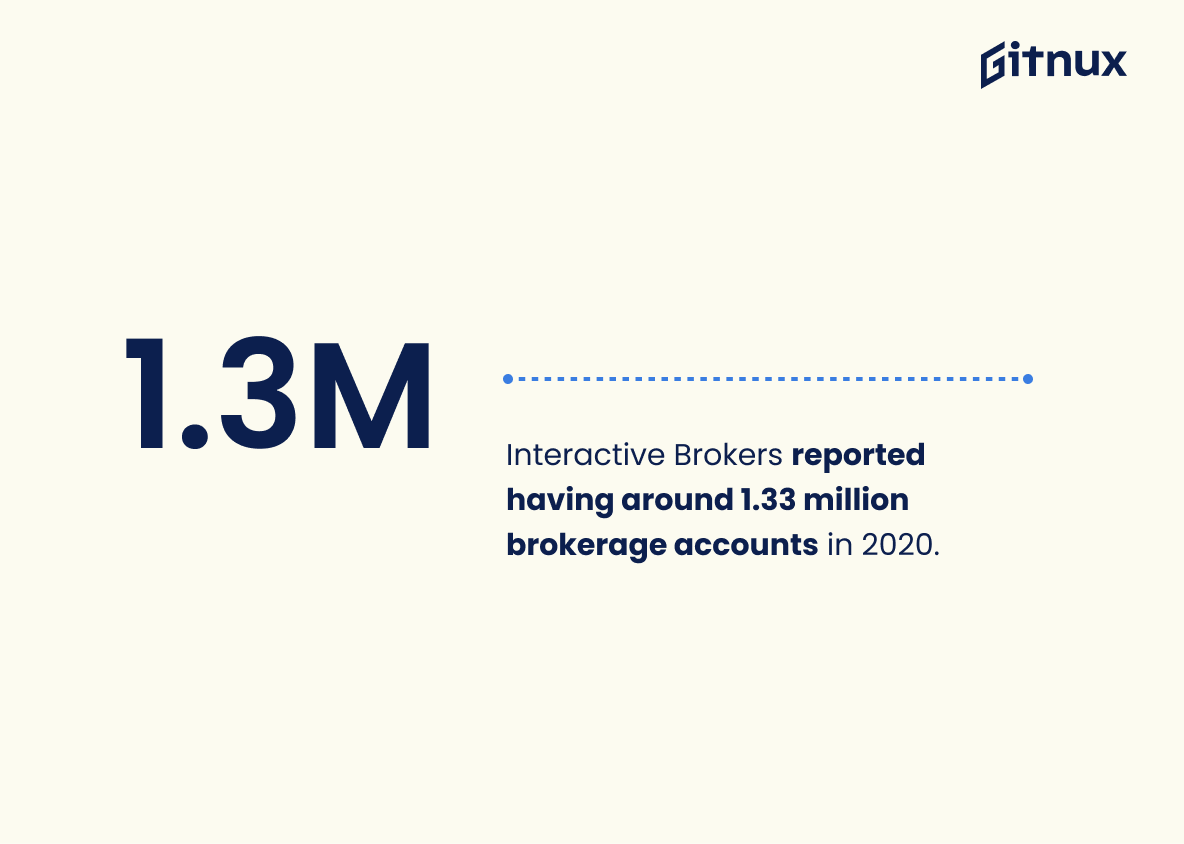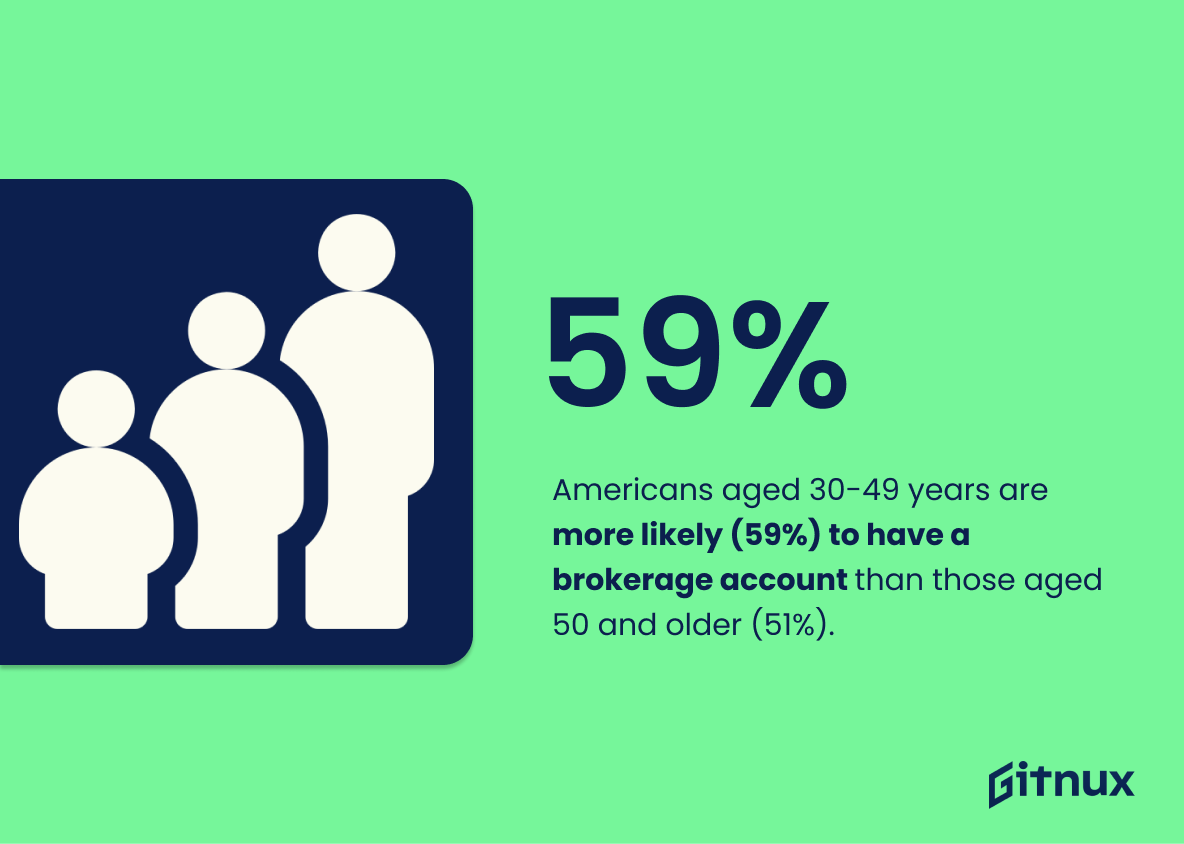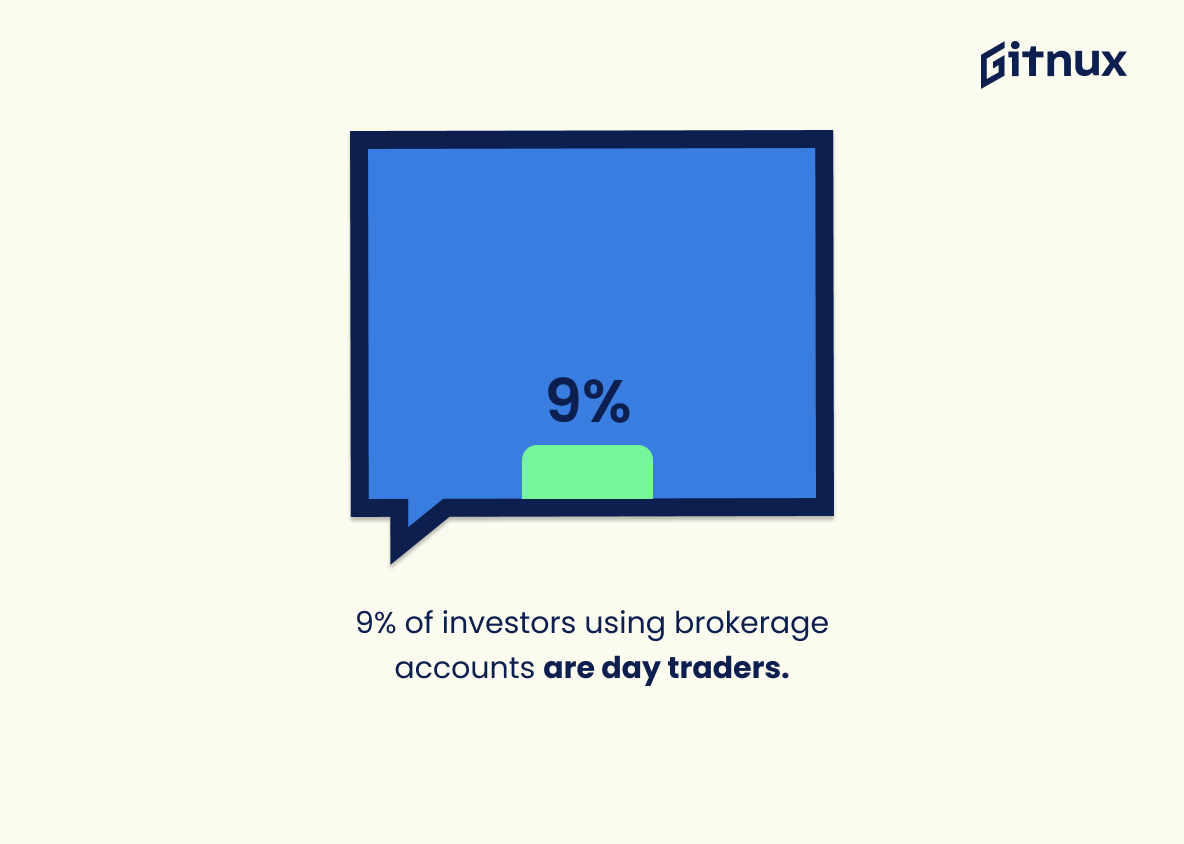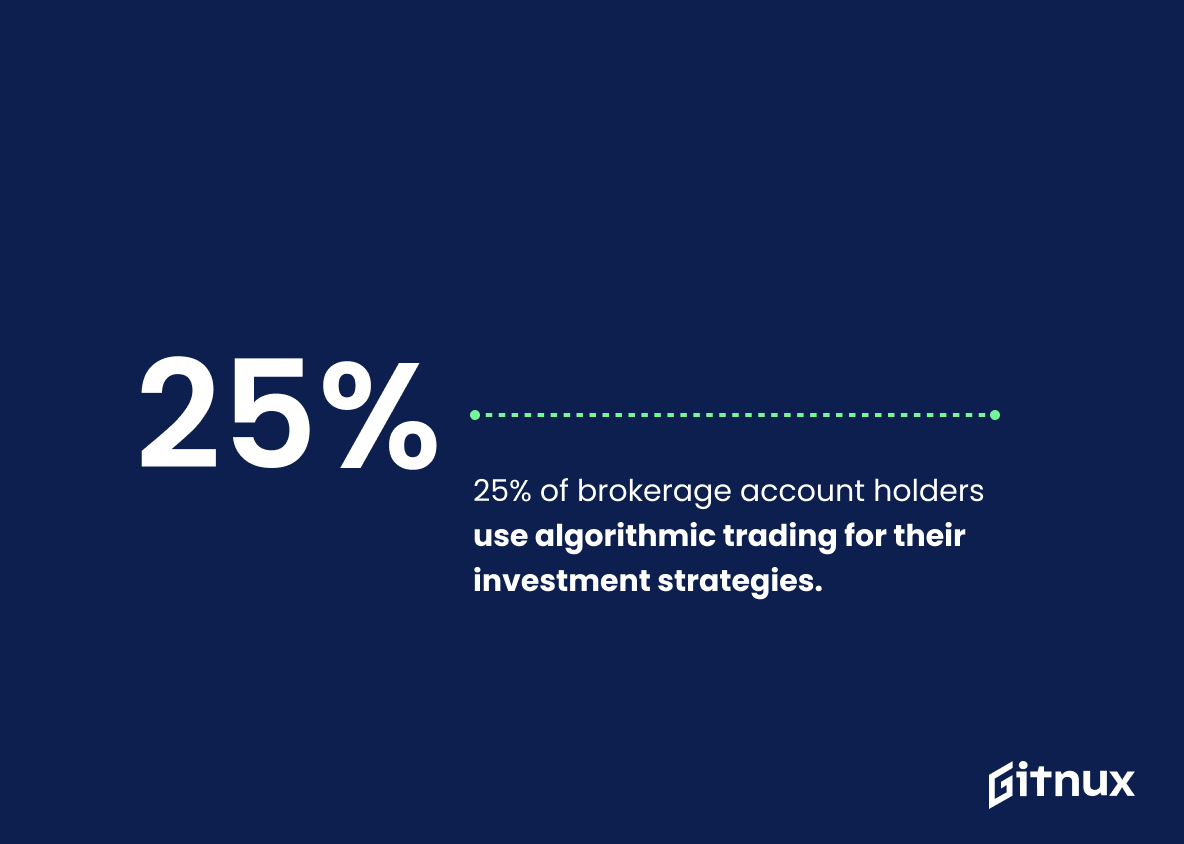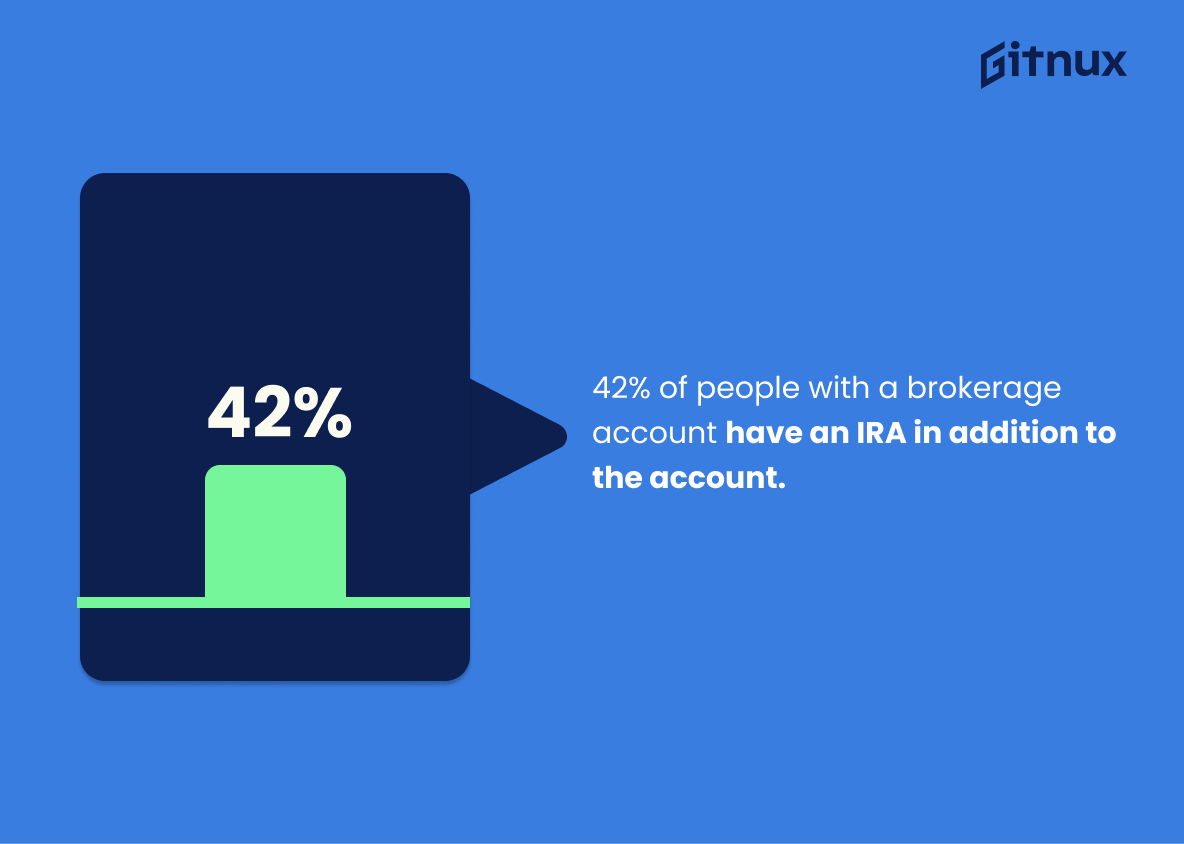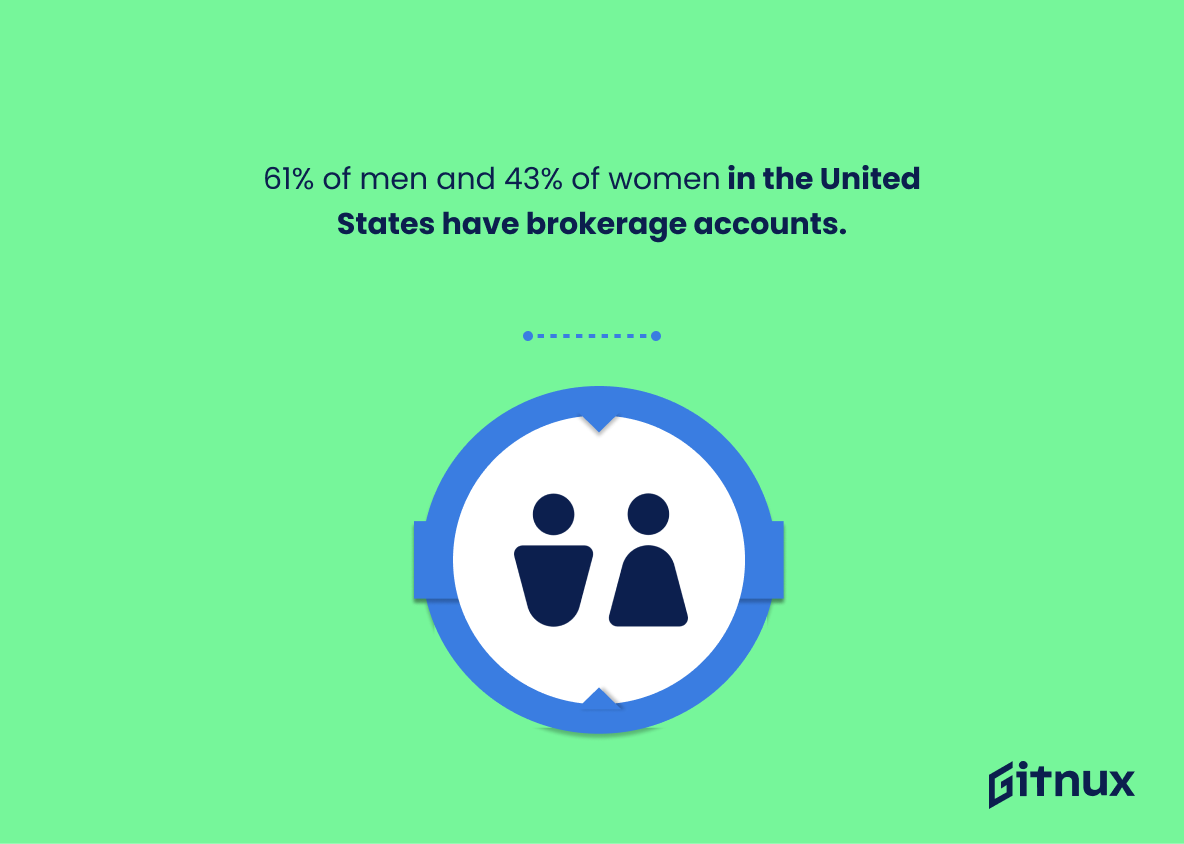Brokerage accounts are an important part of the financial landscape in the United States. According to Statista, there are over 63 million brokerage accounts in the US. Additionally, 47% of adults have a brokerage account and this number is even higher among millennials at 60%. Fidelity had 38 million brokerage accounts by 2021’s third quarter while ETRADE reported 7.2 million and Charles Schwab 31.9 million for 2020 respectively. Robinhood has seen tremendous growth with 18 million users as of 2021 while Interactive Brokers reported 1.33million for 2020 year-end figures .
When it comes to investing strategies, 75% use their brokerages for stocks investments whereas only 2% own direct stock ownership compared to 10% back in 1992 according to FINRA research data . ETFs remain popular too with 43 % increasing their assets during 2020 according to IDC report . For those looking into opening a new account , Fidelity requires $2500 minimum investment amount but offers 35 % savings on costs when compared against mutual funds as per Vanguard study results . Cryptocurrency trading also remains popular amongst online investors – 7 % trade crypto through their brokerages based on Bloomberg analysis findings from 2019/2020 period Finally , 61 percent men versus 43 percent women hold active brokers’ accounts which can be attributed partially due IRA popularity ( 42%) among existing holders according TIAA survey conducted last year
This statistic is a testament to the prevalence of brokerage accounts in the United States. It speaks to the fact that millions of Americans have taken the initiative to invest in their financial future, and that the brokerage account is a popular choice for doing so. This statistic is an important indicator of the current state of the financial landscape in the US.
ETRADE reported having around 7.2 million brokerage accounts in 2020.
This statistic is a testament to the success of ETRADE as a brokerage service provider. It shows that the company has been able to attract and retain a large number of customers, indicating that it is a reliable and trusted source for investing. This statistic is also important in understanding the overall landscape of the brokerage industry, as it provides insight into the size and scope of the market.
Brokerage Account Statistics Overview
Robinhood has over 18 million brokerage accounts as of 2021.
This statistic is a testament to the immense popularity of Robinhood as a brokerage platform. It shows that millions of people have chosen to trust Robinhood with their investments, making it one of the most successful and widely used brokerage services in the world. This statistic is a powerful indicator of the trust and confidence that Robinhood has earned from its customers, and it is an important piece of information to consider when discussing the state of the brokerage industry.
About 75% of brokerage accounts in the United States are used for investing in stocks.
This statistic is a key indicator of the prevalence of stock investing in the United States. It demonstrates the importance of brokerage accounts in the stock market, and how they are used by a large portion of the population. This statistic is essential to understanding the current state of the stock market and the role of brokerage accounts in it.
Direct ownership of stocks by investors with brokerage accounts has declined from about 10% in 1992 to 2% in 2017.
This statistic is a telling indication of the changing landscape of the brokerage industry. It shows that the number of investors who are taking direct ownership of stocks has drastically decreased over the past 25 years. This could be due to a variety of factors, such as the rise of online trading platforms, the emergence of new investment vehicles, or the increasing complexity of the stock market. Whatever the cause, this statistic is a clear sign that the brokerage industry is evolving, and investors should be aware of the changes in order to make informed decisions.
60% of millennials have a brokerage account.
This statistic is significant in the context of a blog post about Brokerage Account Statistics because it demonstrates the prevalence of brokerage accounts among millennials. It shows that a majority of millennials are taking advantage of the opportunities that come with having a brokerage account, such as investing in stocks and bonds. This statistic is important to consider when discussing the current state of the brokerage account market and the potential for growth in the future.
A Brokerage account can save an average of 35% on costs compared to Mutual funds.
This statistic is a powerful indicator of the potential savings that can be achieved by investing in a Brokerage Account. It highlights the significant cost savings that can be made when compared to Mutual Funds, making it an attractive option for those looking to maximize their returns.
43% of brokerage accounts using ETFs increased their ETF assets in 2020.
This statistic is a testament to the growing popularity of ETFs in 2020, indicating that more and more investors are turning to ETFs as a way to diversify their portfolios and take advantage of the potential for higher returns. It is a clear indication that ETFs are becoming an increasingly important part of the investment landscape, and that investors are recognizing the potential benefits of using them. As such, this statistic is an important one to consider when discussing the current state of brokerage accounts and the trends that are shaping the industry.
To open a Fidelity brokerage account, the minimum investment amount for certain types of accounts is $2,500.
This statistic is an important factor to consider when discussing Brokerage Account Statistics, as it provides insight into the financial commitment required to open a Fidelity brokerage account. It is essential to understand the minimum investment amount for certain types of accounts in order to make an informed decision when selecting a brokerage account.
Interactive Brokers reported having around 1.33 million brokerage accounts in 2020.
This statistic is a testament to the success of Interactive Brokers in the brokerage industry. It shows that the company has been able to attract a large number of customers, indicating that it is a trusted and reliable provider of brokerage services. This statistic is also important in understanding the overall size of the brokerage industry, as it provides insight into the number of people who are actively investing in the stock market.
7% of adults with online brokerage accounts trade cryptocurrency.
This statistic is significant in the context of a blog post about Brokerage Account Statistics because it reveals that a notable portion of adults with online brokerage accounts are engaging in cryptocurrency trading. This indicates that cryptocurrency trading is becoming increasingly popular among those with access to online brokerage accounts, and may be a trend worth exploring further.
In 2020, the average income for brokerage account holders was $63,000.
This statistic is a powerful indicator of the success that brokerage account holders have achieved in 2020. It shows that, despite the economic uncertainty of the year, these individuals have managed to maintain a high level of financial stability. This statistic is a testament to the effectiveness of brokerage accounts and the potential they have to help people reach their financial goals.
Americans aged 30-49 years are more likely (59%) to have a brokerage account than those aged 50 and older (51%).
This statistic is significant in the context of a blog post about Brokerage Account Statistics because it highlights the importance of age in determining the likelihood of having a brokerage account. It suggests that younger Americans are more likely to invest in a brokerage account than their older counterparts, which could be due to a variety of factors such as access to more resources, greater financial literacy, or a greater willingness to take risks. This information can be used to inform strategies for increasing brokerage account ownership among different age groups.
9% of investors using brokerage accounts are day traders.
This statistic is significant in the context of a blog post about Brokerage Account Statistics because it provides insight into the types of investors who are utilizing these accounts. It indicates that a significant portion of investors are engaging in day trading, which can be a risky investment strategy. This statistic can be used to inform readers of the potential risks associated with day trading and the importance of understanding the risks before engaging in this type of investing.
25% of brokerage account holders use algorithmic trading for their investment strategies.
This statistic is significant in the context of brokerage account statistics because it demonstrates the prevalence of algorithmic trading among investors. It shows that a quarter of brokerage account holders are taking advantage of the technology to make their investment decisions, indicating that algorithmic trading is becoming increasingly popular. This statistic is important for investors to consider when deciding which investment strategies to pursue.
42% of people with a brokerage account have an IRA in addition to the account.
This statistic is significant in the context of a blog post about Brokerage Account Statistics because it demonstrates the prevalence of IRAs among those who have a brokerage account. It shows that a large portion of people who have a brokerage account also have an IRA, indicating that IRAs are a popular choice for those who are looking to invest.
61% of men and 43% of women in the United States have brokerage accounts.
This statistic is significant in the context of a blog post about Brokerage Account Statistics because it reveals a disparity between the genders in terms of who is taking advantage of the opportunity to invest. It suggests that men are more likely to open brokerage accounts than women, which could be due to a variety of factors such as access to financial education, confidence in investing, or even cultural norms. This statistic provides an important starting point for further exploration into the reasons behind the gender gap in brokerage accounts.
Conclusion
The statistics show that brokerage accounts are becoming increasingly popular in the United States. Over 63 million Americans have a brokerage account, and this number is growing every year. Fidelity, ETRADE, Charles Schwab and Robinhood all reported having millions of customers with active accounts in 2020-2021. The majority of these investors use their accounts to invest in stocks (75%), while others take advantage of ETFs or cryptocurrency trading opportunities.
Brokerage accounts can be beneficial for many types of investors – from millennials to baby boomers – as they often offer lower costs than mutual funds and other investment vehicles. Furthermore, there are various options available depending on an individual’s needs; some require minimum investments while others do not impose any restrictions at all. Finally, day traders make up 9% of those using online brokerages while algorithmic trading strategies appeal to 25%.
Overall it appears that investing through a brokerage account has become more accessible over time due to technological advancements such as mobile apps which allow users greater control over their portfolios without needing extensive knowledge about financial markets or products offered by traditional banks or brokers
References
0. – https://www.medium.com
1. – https://www.vanguard.com
2. – https://www.bloomberg.com
3. – https://www.cnbc.com
4. – https://www.statista.com
5. – https://www.businessinsider.com
6. – https://www.finra.org
7. – https://www.feefo.com
8. – https://www.idc.com
9. – https://www.bankrate.com
10. – https://www.mybanktracker.com
11. – https://www.tiaa.org
12. – https://www.fidelity.com
13. – https://www.interactivebrokers.com
14. – https://www.gallup.com
